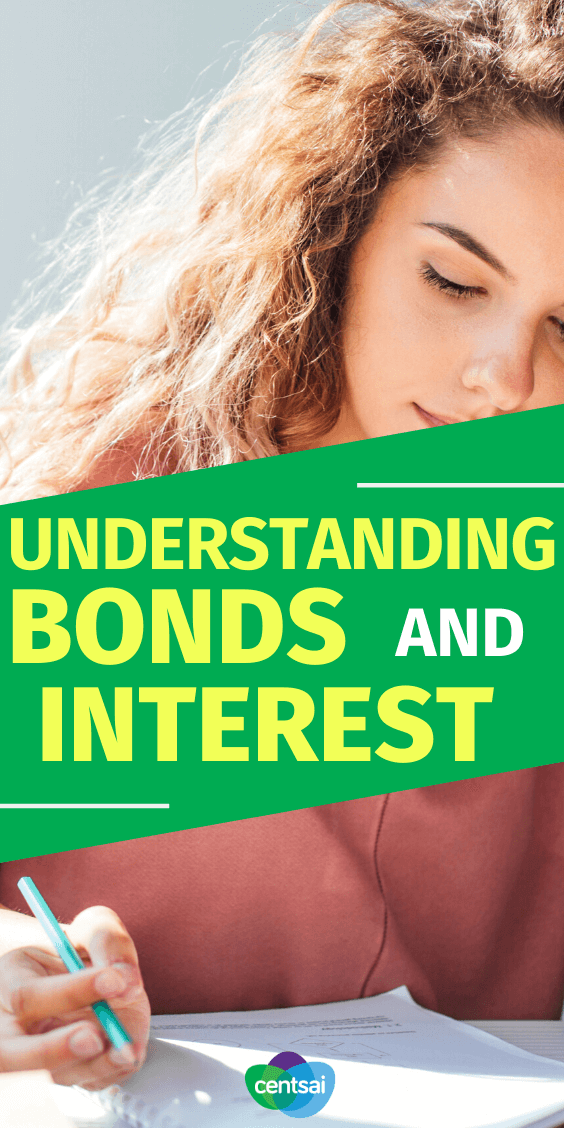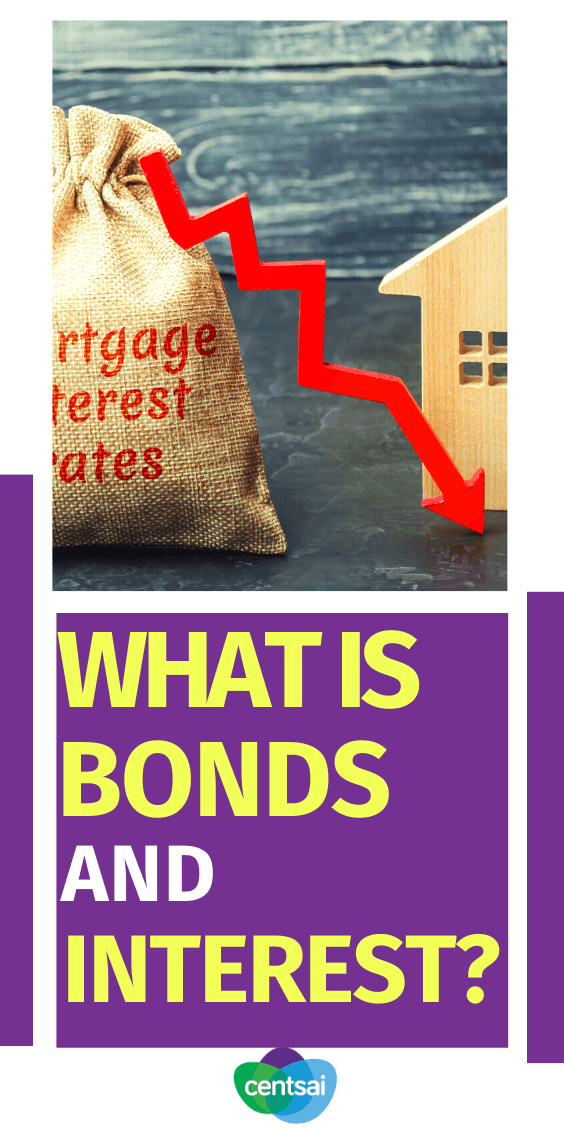

The relationship between bonds and interest isn’t mythical or abstract. It’s straightforward, albeit with a number of variables. But a working understanding of bonds and interest needn’t be difficult.
Bonds are issued by organizations to raise capital. Corporations issue them; governments issue them. The bond is an obligation to repay the purchaser their money at some point in the future. In exchange for the use of these funds, the issuer pays the purchaser interest. We’ll cover some variations on this idea a little later, but let’s start with this basic format.
How Bonds Are Issued
The bond is issued with a specific date when the holder — either the purchaser or subsequent owner — can present the bond for payment. This is the bond’s maturity, the date when it is due. The bond will be issued with an original maturity that can be as far out as 30 years, although shorter periods are also common.
At the time of their issue, bonds are traded on a primary market and purchased by dealers who sell them to their clients. Afterward, bonds may be resold on a secondary market, much like stocks.
Plus No Fees! Get Started Today
When issued, bonds have a stated interest rate. This is their coupon rate. Back in the day when everything was paper and we didn’t have little electrons flying around doing our bidding, bonds were actually issued as nice and often colorful paper instruments with coupons attached. You would detach these coupons and submit them to get your interest. Hence we refer to the stated rate of interest for the bond as its coupon rate.
Factors in Determining Bond Prices and Interest Rates
A lot of factors go into the determination of the interest rate. These include the creditworthiness of the issuer, the length of time until maturity, the current economic climate, and other factors associated with the bond itself. There are different types with different risk profiles.
Once a bond has been issued, its value on the secondary market will also fluctuate. As with stocks, for a transaction to occur you need a willing seller, a willing buyer, and a price at which both are willing to move forward. In other words, the market sets the value.
Doing the Math
One of the biggest factors in determining value is current interest rates. Let’s say you own a bond — a $1,000 bond from XYZ Corp. It has a coupon rate of 6 percent, and 28 years to go until maturity. Let’s also say that interest rates have fallen since your bond was issued.
Currently, a bond with an identical risk profile can be had at issue with a coupon rate of 5 percent. You would probably not feel incented to sell your bond that pays 6 percent for the next 28 years when you could only replace it with one that pays 5 percent.
In order to get you to sell your bond, someone’s going to have to offer you more money.
Its original value, which the then owner will get at its maturity, is its par value. In this case, the par value of your bond is $1,000. To influence you to sell it, someone has to offer you more than $1,000 — your bond will sell at a premium to par. The decrease in interest rates, other things being equal, has increased the value of your bond.
What Happens When Interest Rates Increase
Let’s say things went the other way. Let’s have you holding the same bond under the same scenario except in this case interest rates have increased. Let’s say newly issued bonds with the same risk profile as yours are being issued with a coupon rate of 7 percent. Your 6 percent isn’t so attractive anymore. Another investor would prefer the new bond to yours. If you wish to sell yours, you’ll have to sell it for less than its par value of $1,000 — your bond will sell at a discount to par.
As you can see bonds have an inverse relationship with interest rates.
The general rule is that an increase in interest rates causes a decrease in bond values and a decrease in interest rates causes an increase in bond values. The next logical question is how great of an impact does a change in interest rates have?
Plus No Fees! Get Started Today
What Impact Do Interest Rates Have on Bonds?
A big factor in interest rate sensitivity is time to maturity. This makes sense. Consider our above example, but say the bond you hold has four years remaining until it reaches its maturity. An investor considering purchasing your bond either receives greater or lesser interest from your bond for a shorter period of time. Therefore, there will be a smaller influence on the selling price.
It would be great to have a way to determine what that price change should approximately be. Enter the bond's duration. Duration isn’t a measure of something real, it’s a mathematical representation of a bond’s sensitivity to changes in interest rates. There are a few different ways to calculate duration.
How to Calculate Bond Duration
Generally, duration calculations consider the cash flows of the bond across the remainder of its time to maturity. The Macaulay duration, the most commonly used methodology, is the ratio of the sums of the present values of future cash flows multiplied by the period in which they’ll be received to the bond’s present worth.
By multiplying the present value of each future cash flow by the period in which it will be received, significant additional weight is placed on more distant cash flows. This causes the increased impact of length of time to maturity to be reflected in a longer duration.
Way back at the beginning, I said that a working knowledge of bonds needn’t be difficult. For many people calculating and analyzing duration would be difficult — and also unnecessary.
It’s sufficient to know that duration is simply a representation of a bond’s sensitivity to interest rate changes.
If you’re comparing similar bonds, you can use that as an indicator of which of the bonds would likely be more or less sensitive to changes in rates.
Yield to Maturity (YTM)
The next concept we need to touch on is yield, specifically yield to maturity (YTM). If a bond is sold at par (again, its face value), its coupon rate and its yield are the same. Let’s look at what happens when these aren’t the same.
First let’s look at an example where a bond is selling at a premium. Let’s say a $1,000 par bond is selling for $1,050. And let’s say the bond has a coupon rate of 7 percent.
If you purchase the bond for $1,050, you’ll receive $70 each year in interest. You don’t get a 7 percent yield on your investment, you get less. Your actual annual yield is 6.67 percent. Your actual yield is less than the coupon rate because you paid more than par for the bond, and par is the amount the coupon rate is calculated from. And we need to add in one more complication.
You paid $1,050 for a bond that will be worth $1,000 at its maturity. If you hold it until maturity, that’s what you’ll receive, $1,000. You will have a loss of $50 to calculate into your cash flows to determine your actual yield. While the mathematical solution to yield isn’t overly complex, approximations are generally used because they’re simpler.
Start With 5% Fixed-Interest and No Fees
Why YTM Is Important
Typically, yield to maturity calculations provide you a number that is the equivalent yield you would receive if you held the bond to maturity considering its purchase price and coupon rate. The YTM is saying if you bought an equivalent investment that had this yield it would effectively be the same. And that’s fine for us. That’s what we really want to know.
In our example, if we plugged this into a YTM calculator, we’d find a yield slightly less than the 6.67 percent annual return we’re getting in interest on our investment because the YTM calculation would incorporate the $50 we’re going to lose at maturity because we paid over par for the bond.
How Bond Ratings Work
Next, let’s look at ratings. Bonds are rated by rating agencies and assigned a rating that is an indicator of the issuing organization's ability to meet its obligations to the bondholders. The three major bond rating agencies are Standard & Poor’s, Moody’s Investor Service, and Fitch. They use slightly different scales to depict a hierarchy of an organization’s financial stability and the likelihood of meeting their obligations.
Note that the rating is on the bond, not the organization itself.
The ratings are important for a couple of reasons. One is that they inform investors about risk. They also impact rates, with more highly rated bonds tending to pay lower rates when all other things are equal. Banks and financial institutions invest in the upper ranges of these ratings.
Bonds within these ranges are considered investment grade and have a fairly low risk of default. Bonds outside of — below — this range are below investment grade. These bonds will tend to have a higher coupon rate; they need to offer investors more to induce them to accept the higher risk.
We’re not going to get any more technical here. There’s a lot more to know, but if you understand what’s presented here you should have a good working knowledge of bond basics. We didn’t delve into different types of bonds like government bonds, municipal bonds, and bonds tied to projects such as revenue bonds.
These all offer some tradeoffs in terms of tax treatment or protection against default in exchange for lower coupon rates. They make sense in a lot of situations, but we’ll have to delve into those in another piece.
The Bottom Line on Bond Prices and Interest Rates
The typical investor will be investing in corporate bonds through a mutual fund or an ETF; generally as part of implementing a diversification strategy using asset allocation or another portfolio modeling technique. For that purpose, the basics should be sufficient. A lot of your risk is being managed by the portfolio manager or through the portfolio’s construction. It’s always important that you, the investor, understand the risks and rewards associated with your investments.
When investors don’t understand the risks, they bail out and turn temporary setbacks into permanent losses. Bonds have a degree of volatility. They’re going to move up and down in price due to changes in interest rates and other factors that affect the market.
If you’re invested in the right investments for the right reasons, market fluctuations aren’t a reason to bail out. Bonds can serve a valuable purpose in a diversified portfolio. They can provide a predictable stream of income for retirees. They can serve a variety of purposes for those who understand the basics and match them to what they are trying to accomplish.










